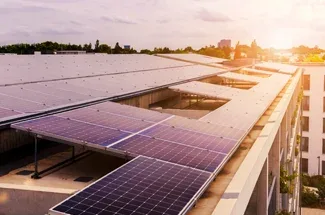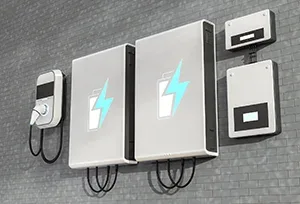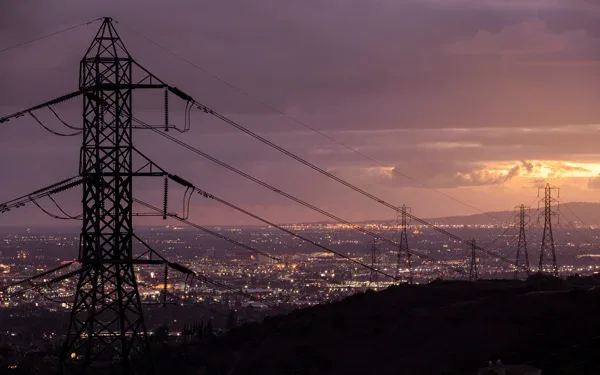A small distributed energy resources project that could have a big impact
Aggregating small distributed energy resources such as residential batteries, home or community solar installations and electric vehicles has long been seen as a promising way to achieve enhanced flexibility and decarbonization for the grid by utilizing renewable generation to balance energy needs at the local, distribution and transmission levels.
The protocols needed to make that happen, however, are still new and have challenges more traditional transmission-connected projects don’t face.
Now, with help from a demonstration project grant from the California Energy Commission (CEC) and the hard work of ISO staff and various energy practitioners from around the state, the first such aggregation project has reached commercial operation. It will soon be providing low-cost, clean power to an estimated 340 households in Los Angeles County while earning wholesale market revenue.
Known as the Bassett-Avocado Advanced Energy Community (BAAEC) serving the area of Los Angeles County where it is located, the project is relatively small, at .67 megawatts of dispatchable capacity. Nevertheless, it required careful planning and coordination by a number of different entities to come to fruition.
The aggregation project, which is consistent with state and federal policy on the role of distributed energy – and with ISO requirements for new resources to participate in ISO-managed electricity markets – could also provide key lessons learned and serve as a template for bigger distributed energy aggregations in the future.
“To me, the biggest impact is that it underscores the fact that there is no project too small to make a difference in our transition to renewable energy,” said Kelsey Gormley, Vice President of Grid Integration for GridSME, a national energy consulting firm that helped the project’s backers make sure all the moving parts were handled correctly.
“For a long time in California, we have been quite naturally focused on the big utility scale projects which are an integral piece of the puzzle. But we also know that by aggregating some of these smaller projects together in a way that works for the grid, we can have a very positive impact on reliability, affordability and in meeting our clean energy goals.”

The project was first proposed by the Energy Coalition, a non-profit with 50 years of experience helping local communities complete energy projects. The Energy Coalition secured funding for the project and brought together the community and project developers, facilitated local stakeholder participation, and partnered on community outreach to demonstrate how both renewable and affordable energy can be deployed within disadvantaged communities.
“This is still a relatively new opportunity for developers to consider in their value proposition for distributed energy resources project development,” said Jill Powers, the ISO’s Demand Response and Distributed Energy Sector Manager. “Over the years we have seen several developers starting down the path to market participation become intimidated by requirements and approval processes needed at multiple levels before reaching commercial operation as a wholesale market resource. Having a project successfully work through these processes provides all parties involved with the lessons learned that are needed to improve them for the next project. We are so excited to see this project come online and hope this will become an example to others that the pathway to markets is open.”
Getting the project across the finish line also demonstrates the critical role that local, distributed energy resources can play in advancing California's clean energy goals, said Lindsay Descagnia, Vice President of Power Supply for Clean Power Alliance (CPA), a community choice aggregator in Southern California. CPA is the off taker for the power purchase agreement.
“By aggregating smaller systems like rooftop solar, we’re not only improving grid reliability but also providing low-cost, clean power to underserved communities,” Descagnia said. “This project is a great example of how innovative, community-driven solutions can contribute to the state's transition to a more resilient, decarbonized grid."
ISO market rules have allowed aggregations of distributed energy resources to participate in the ISO market and provide energy and ancillary services since 2016. In 2022, the Federal Energy Regulatory Commission issued Order Number 2222 to “better enable distributed energy resources to participate in the electricity markets run by regional grid operators.”
Since the FERC order came out, the ISO lowered the threshold a project needs to participate in the market from 500 kilowatts to 100 kilowatts, which helped the Bassett-Avocado aggregation become commercially feasible.

Pivot Energy, a national renewable energy provider and independent power producer, worked with Clean Power Alliance to execute the necessary power purchase agreements to aggregate two rooftop solar projects located on adjacent properties. This included several years of development scope for these sites as well as coordination with Southern California Edison on interconnection studies and interconnection agreements. The electricity generated from the project’s two rooftop solar installations will serve CPA's customers under its Power Share program, which provides customers 100% renewable energy at a 20% monthly bill discount.
For everyone involved, the project underscores that distributed energy resources are a viable local option for communities that can and will have an overall positive impact to the distribution and transmission grid. The project could also serve as a model for community renewable energy projects and their inclusion in wholesale markets.
“This is a very exciting and creative project, which enables solar energy to go directly to the grid from a large, urban area like metropolitan Los Angeles,” said Ryan Turnbull, project manager for Pivot Energy. “I hope that this project model can help pave the way for future development of other similar solar projects in California.”


